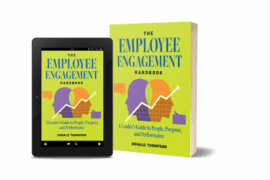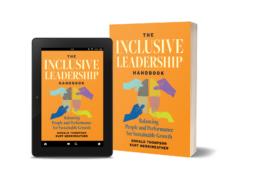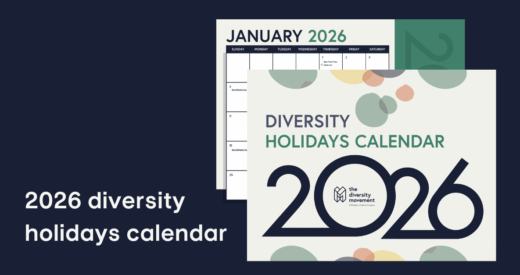The artificial intelligence (AI) revolution is here, reshaping industries and redefining how work gets done. Early adopters are already seeing enhanced productivity and greater efficiency. And, within the next five years, 60% of C-suite executives plan to expand AI integration across their organizations. More than a technical upgrade, AI has the potential to affect every facet of the employee experience.
The opportunity is significant, yet the risk is equally real. AI can accelerate decision-making and free people to focus on higher-value work. But if organizations adopt AI without centering the human experience, they risk alienating employees, eroding trust, and undermining long-term performance.
Why Human-Centric AI Adoption Matters

Despite positive outcomes reported by those who are already using AI, workforce adoption is lagging. Data from Ernst & Young shows that 97% of senior business leaders whose companies are leveraging AI report measurable benefits from the investment. Yet, a Pew Research survey finds that only 16% of U.S. workers accomplish a portion of their work with AI and 81% aren’t using it at all. What’s more, women are less likely to use AI tools than men.
This inconsistent adoption is fueled by real concerns. Workers are anxious about job security, skill relevance, and whether automation will replace their roles entirely. Others worry that using AI at work will make them seem lazy or less competent. Women, who often face harsher consequences when perceived as lacking expertise, are especially wary of anything that could damage their hard-won credibility.
To overcome these barriers, leaders should set clear expectations. If everyone is expected to integrate AI into their workflow, the technology ceases to be a shortcut and becomes part of the role. AI should also be framed as a tool that enables greater creativity and problem-solving, not just a method to cut costs.
“The messaging around AI has to be one that we care about you, that we see you, that we hear you, and that we want to know how to support you,” explains Valerie Merriweather, Founder and Chief Wellbeing Officer of Fitwell Solutions. “The key to fueling connection and engagement and trust is the messaging around AI, talking about how your organization is utilizing AI to improve the employee experience.”
HR professionals have a pivotal role to play, because they understand how work gets done and how people experience that work. A human-centered approach to AI adoption can help employees imagine how the technology can shift their duties and enhance their performance.
As Erica Rooney, Chief People Officer at Raleigh-based marketing agency Walk West, says: “It will take over those repetitive, automatic tasks that nobody loves, and give you more time to do the things that you do love. Leaders should be working with their teams to envision a different future, but one that still has people in it.”
Strategies for a Human-Centered Transition
To succeed, AI adoption must be approached as both a business transformation and a people strategy. CHROs and other executive leaders can accelerate adoption and reduce anxiety by embedding the following practices into organizational strategy:
- Communicate clearly and transparently. Change is unsettling, so leaders should be clear about why AI is being adopted, how it aligns with company strategy, and what steps will be taken to support employees through the transition. Transparent communication about ethical guidelines, training opportunities, and job impacts helps reduce fear and builds trust.
- Invest in AI education and training. Ensure employees feel equipped to use AI tools. Provide structured learning opportunities, from group training to dedicated “practice time” for experimenting. Leaders who share their own learning journeys reinforce the message that upskilling is a shared priority. The goal is to promote a culture of continuous improvement and career growth.
- Address AI bias proactively. One well-documented challenge with AI is the potential for bias, because generative tools like Chat GPT were trained on existing data sets. To mitigate risk, successful organizations create safeguards such as training on unconscious bias and inclusive prompt engineering. For example, a request to name the five most important philosophers might result in a list of Western thinkers. Adding “worldwide” results in different responses.
- Center humans to prevent errors. AI-generated outputs must always be reviewed by humans, whether they’re writing content, analyzing data, or researching a topic. Ensure quality control by checking for reputable sources, accurate information, and possible plagiarism.
AI integration should reinforce organizational culture, reflecting values like clear communication, professional development, inclusion, and high standards. By aligning AI adoption with human-centered objectives, HR professionals can drive innovation, improve employee engagement, and future-proof their workforce.
The Future Workplace: Innovative and People-First

The spread of AI has been rapid, and the pressure to adopt is intense. But technology alone isn’t enough to gain a competitive advantage. The true differentiator will be how well organizations balance mechanized innovation with human connection.
When implemented thoughtfully, AI can relieve employees of repetitive tasks, freeing time for deeper thinking, collaboration, and creativity. It can create opportunities for professional growth and enhance the employee experience in ways that strengthen retention and engagement. Imagine the cumulative impact of an entire workforce with more time for exploring ideas and creating meaningful work.
HR leaders stand at the center of this transformation. By advocating for human-centric adoption, they can ensure that AI strengthens organizational culture rather than destabilizing it. The result is a workplace that is dynamic, innovative, and firmly grounded in trust.
Donald Thompson, EY Entrepreneur Of The Year® 2023 SE Award-winner, founded The Diversity Movement, a Workplace Options Company, to fundamentally transform the modern workplace through diversity-led culture change. Recognized by Inc., Fast Company and Forbes, Thompson is author of Underestimated: A CEO’s Unlikely Path to Success and has published widely on leadership and the executive mindset. His latest book is The Inclusive Leadership Handbook: Balancing People and Performance for Sustainable Growth, co-authored with Kurt Merriweather, Vice President of Global Marketing at Workplace Options. Follow Thompson on LinkedIn for updates on news, events and his podcast.




